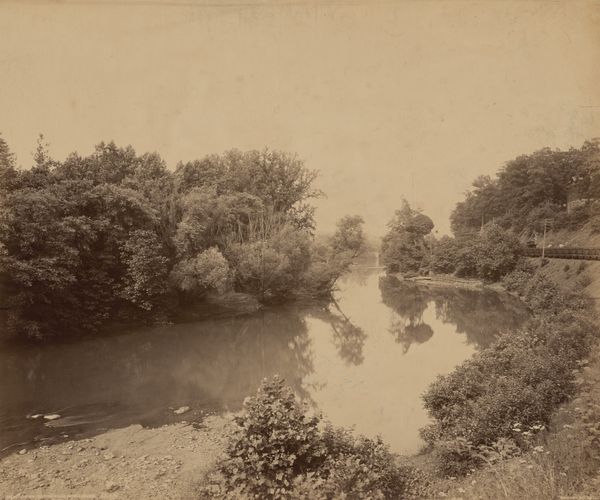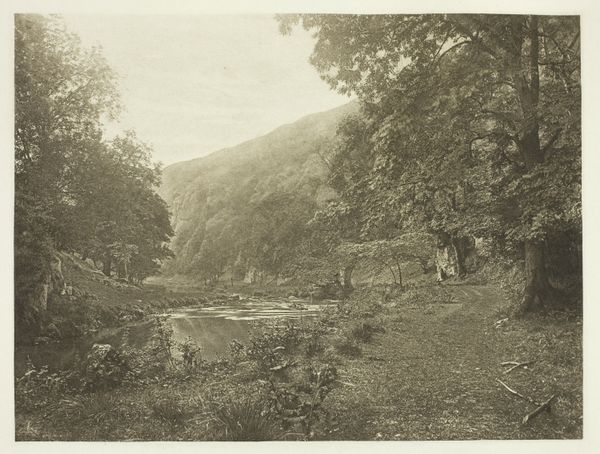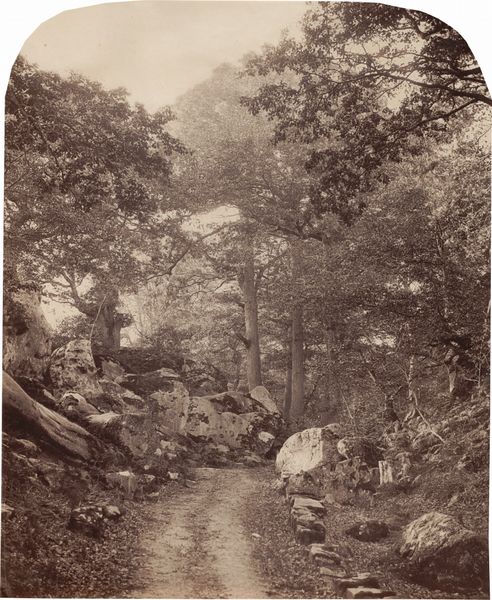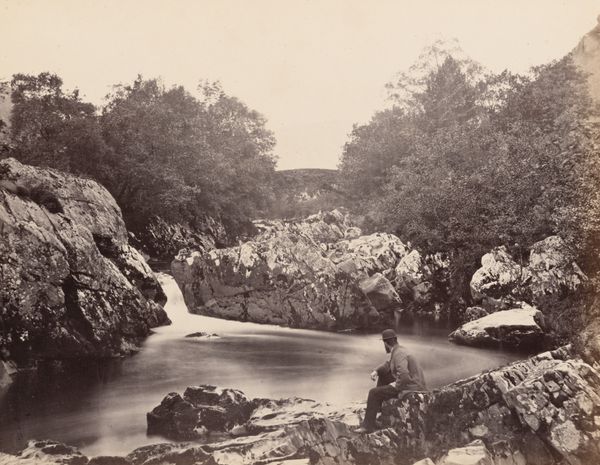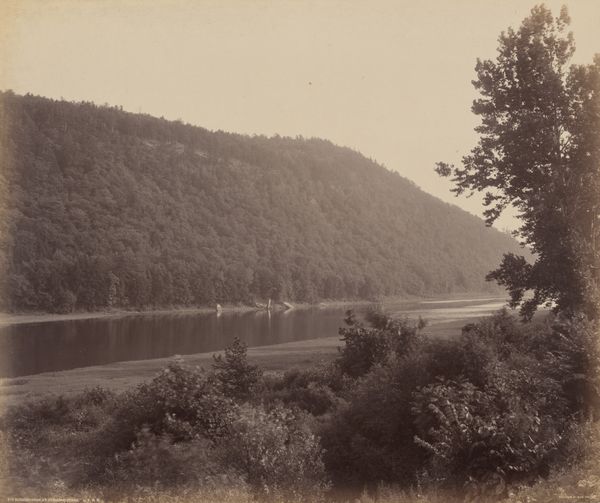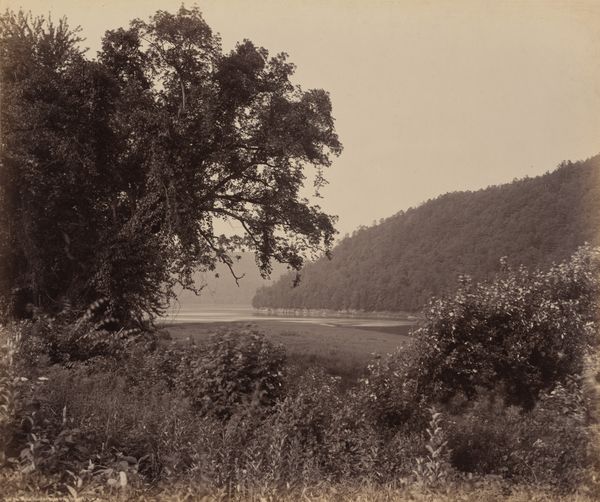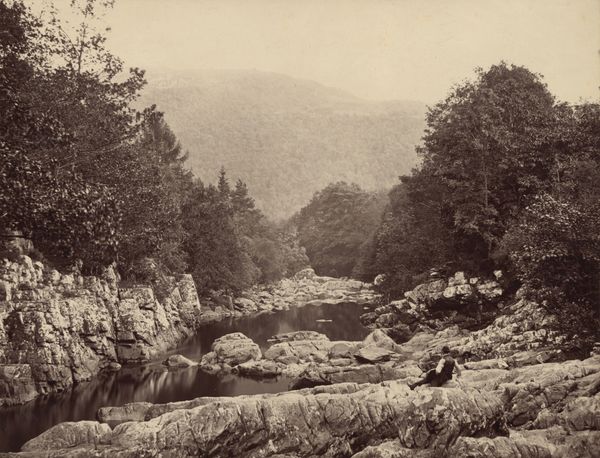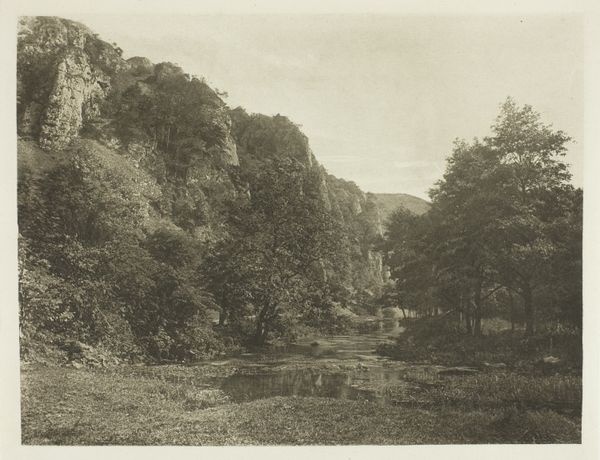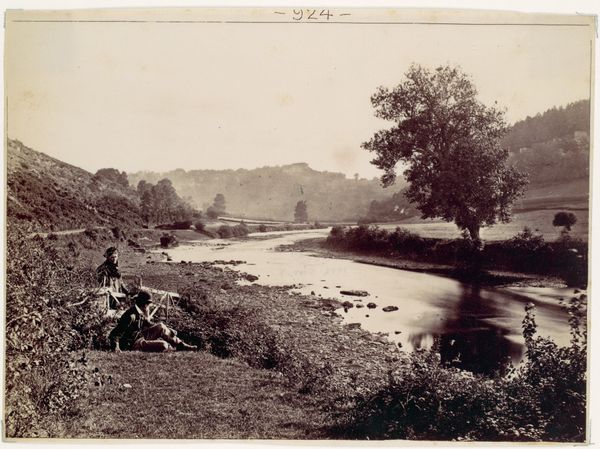
Dimensions: image/sheet: 20.8 × 16.5 cm (8 3/16 × 6 1/2 in.) mount: 37 × 29.6 cm (14 9/16 × 11 5/8 in.)
Copyright: National Gallery of Art: CC0 1.0
Editor: This is Alfred Rosling's "On the River Mole, Surrey," a gelatin-silver print from around the 1860s. The soft focus gives it a dreamlike quality. What can you tell me about it? Curator: Looking at the tangible aspects – the gelatin silver print itself – tells us about Rosling’s world. Think about the industrial processes necessary to create the photographic materials. The availability and affordability of these technologies were transforming how people visualized and understood landscape. This image is a commodity. Editor: A commodity? Curator: Precisely! How would this image circulate? Consider the audience that would have access to photographic prints at this time. They were primarily available to upper-middle class consumers in urban settings. Editor: That's a really interesting point. So the choice of subject, this tranquil river scene, speaks to a particular desire, or even a yearning, in that urban, consumerist culture? Curator: Absolutely. And the artistic choices, the soft focus you mentioned, elevate the scene, mimicking the painterly aesthetic favored by the art establishment. How do we consider the social implications of a staged idyll such as this one? It depicts a highly constructed scene that would obscure labor that sustained life. What, exactly, are we consuming when we consider this image of "nature?" Editor: I see your point! I was caught up in the image itself, the beauty of the scene. I hadn’t considered the wider systems of production and consumption it represents. Curator: Exactly. The point is to remember that any artistic output, this one especially given it’s technological and therefore industrial creation, exists in very specific contexts of labour, access, and exchange.
Comments
No comments
Be the first to comment and join the conversation on the ultimate creative platform.

